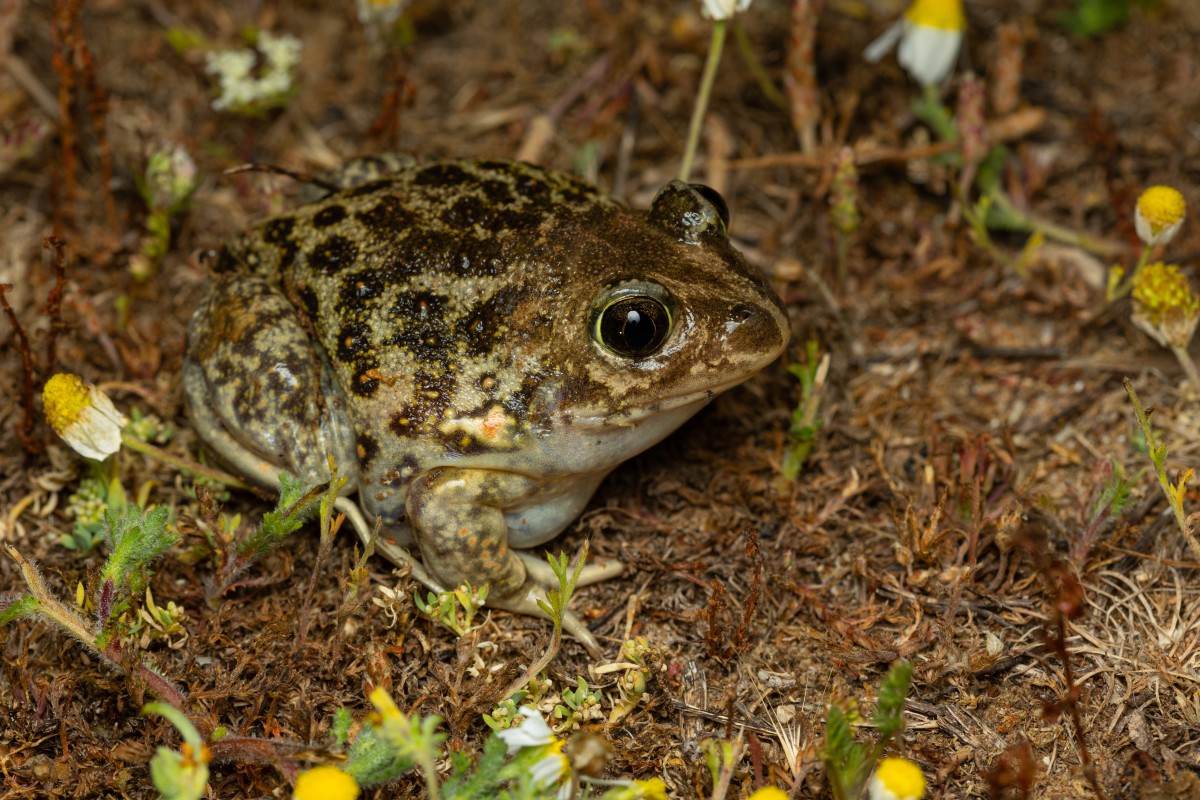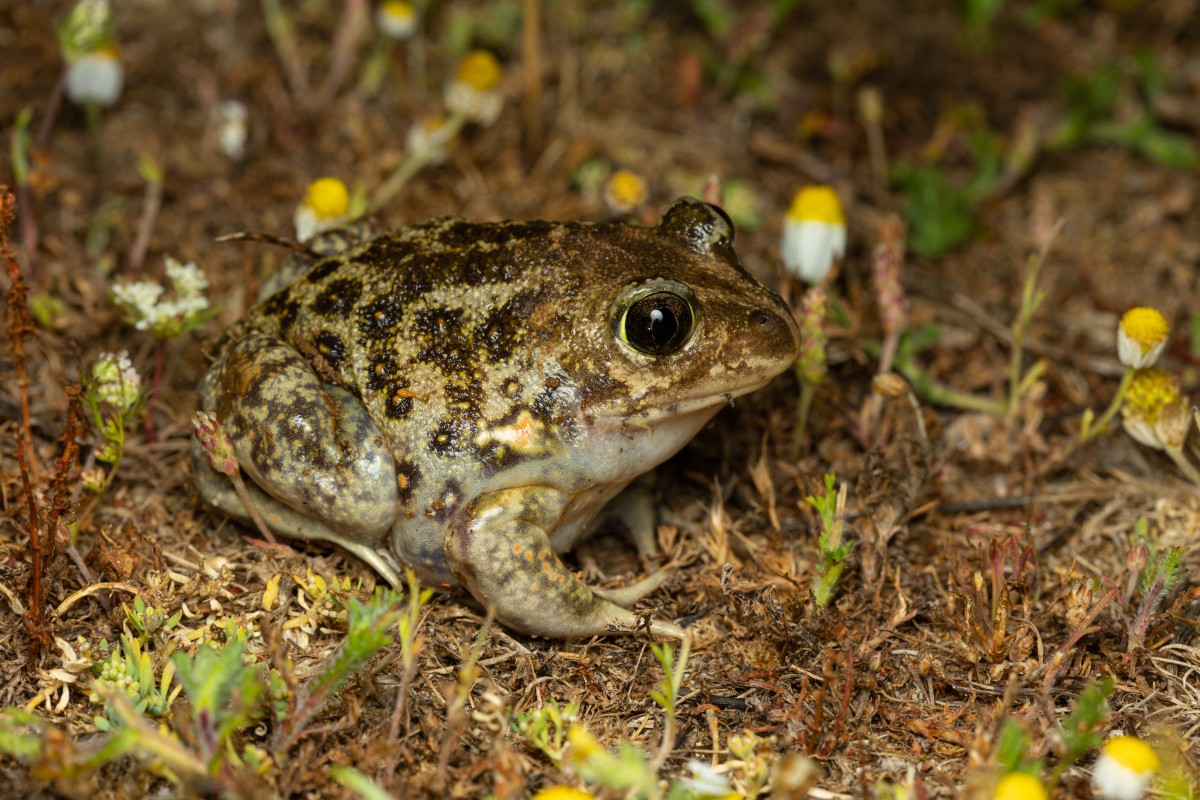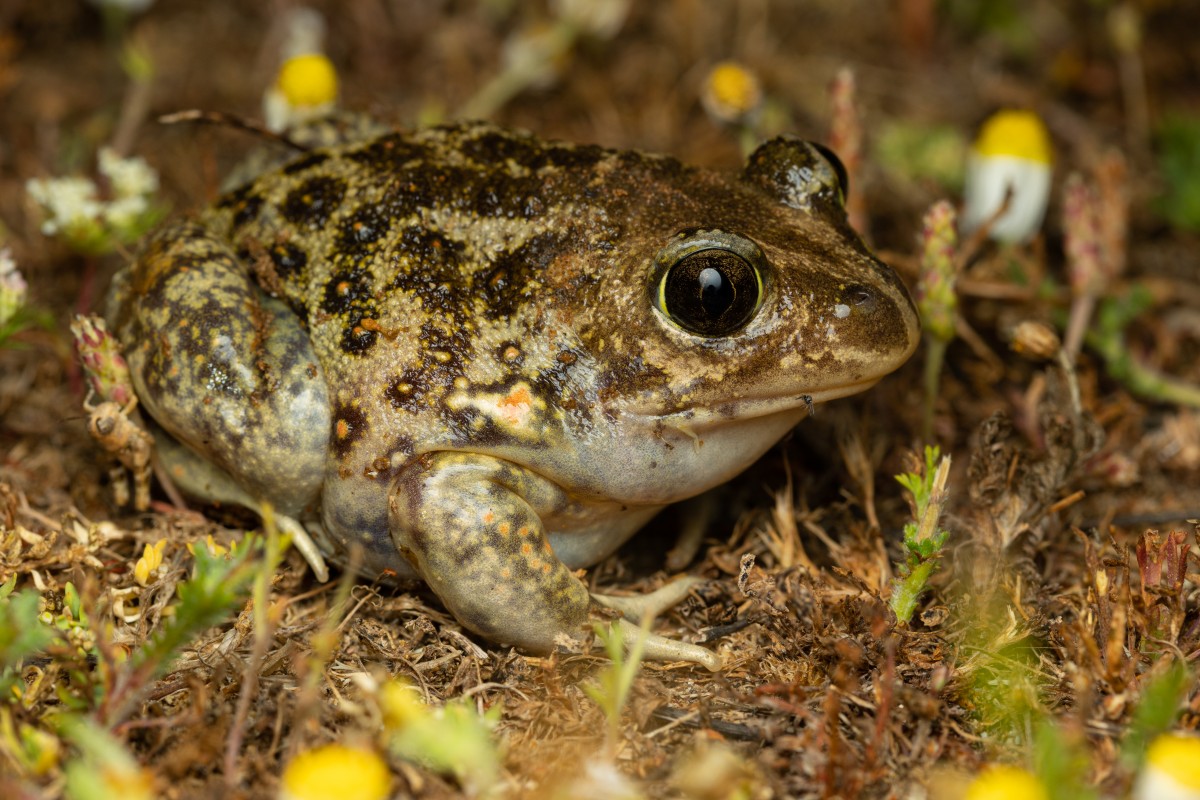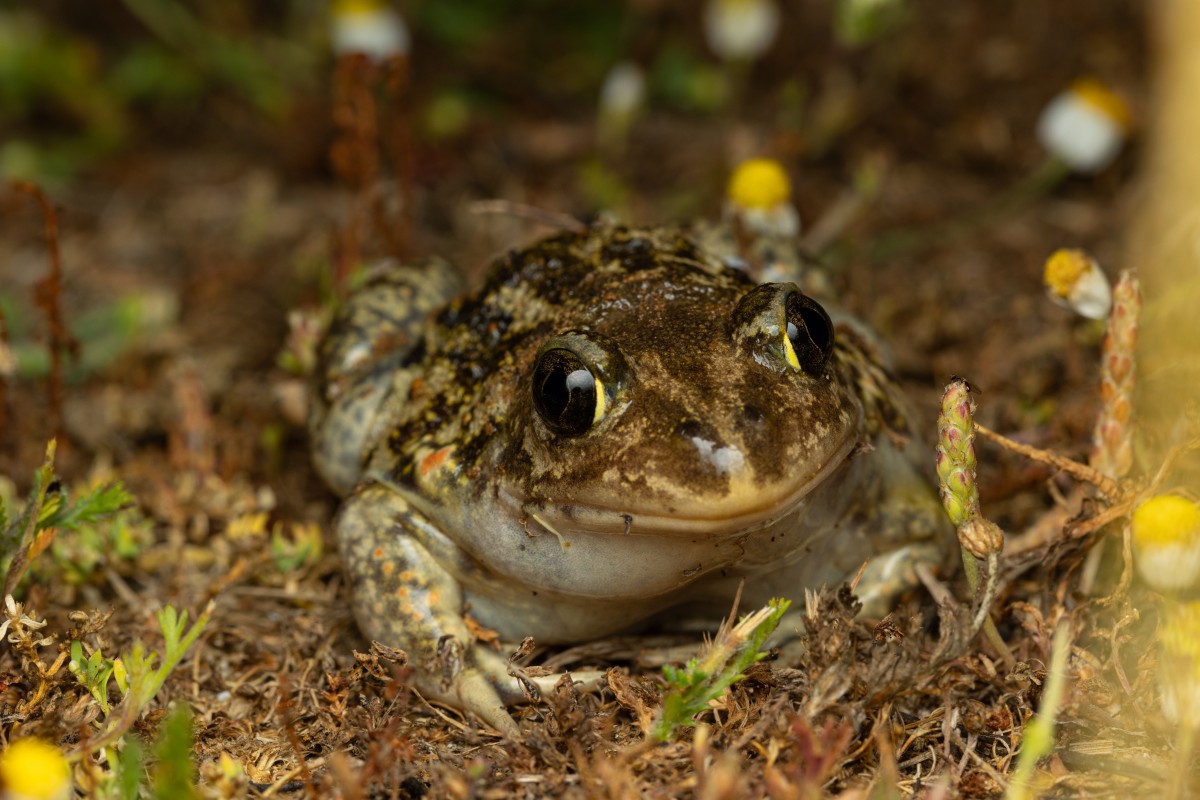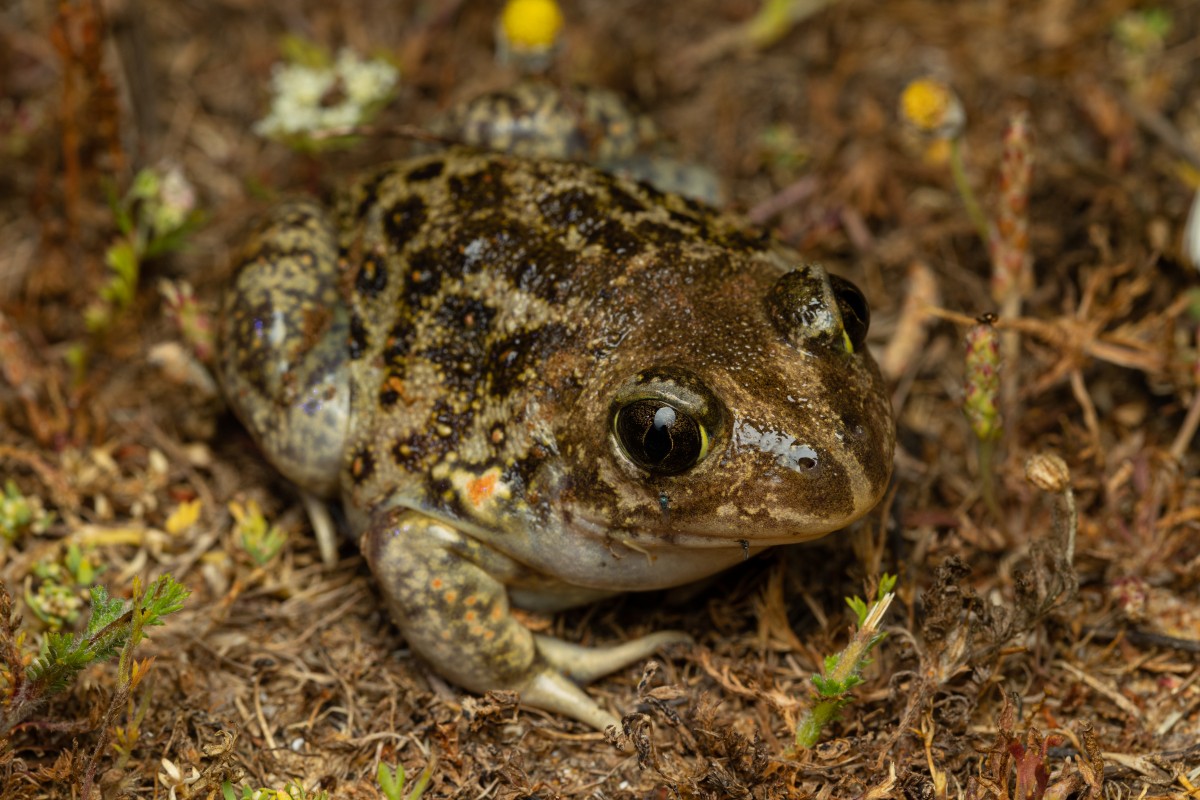Padder – Springpadder – Løgfrøer
Pelobates balcanicus
Balkan Løgfrø
Spadefoot Toads are frogs rarely seen, as they are nocturnal, live underground for most of the time – and often are quire rare in their range. They only breed in certain ponds (preferably without fish).
The taxonomy of this group of frogs, has recently been analyzed using genomic data – and has revealed, that some of the former subspecies were to be elevated to separate species, and most surprisingly of all, that the population from Peloponnese, Greece seemed to be a separate genetic isolated subspecies – which was until recently unnamed. It was named Pelobates balcanicus chloeae in 2019
Peter Jensen and I was fortunate to team up with one of the researcher on Elias Tzoras in the evening of 26. May. We went to a locality in the Strofylia area (Type Locality), were Elias previously had found the new subspecies. I must admit, that i had no hope of us being lucky enough to find one of these individuals, as i know spadefoots are often a matter of luck to find. But in the dark, we spread out in the terrain, and just 5-10 minutes into our search i stumpled upon this magnificent animal. The first
spadefoot i have ever found myself – what a high-light to an magnificent evening.
spadefoot i have ever found myself – what a high-light to an magnificent evening.
Thanks a lot Elias for guiding us this night  Literatur:
Literatur:
Dufresnes, C., I. Strachinis, E. Tzoras, S.N. Litvinchuk & M. Denoël. 2019. Call a spade a spade: taxonomy and distribution of Pelobates, with description of a new Balkan endemic. ZooKeys, 859: 131-158.
